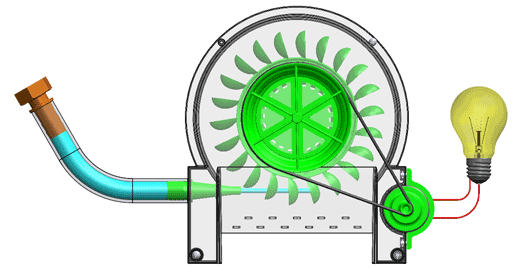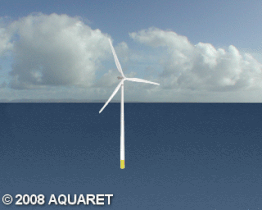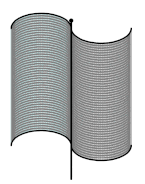Renewable Energies
Introduction
Research objectives of the laboratory are divided into two parts: sea waves energy and wind energy. In the sea waves energy section, research, design and construction of equipment for converting the sea wave energy into electricity is considered. In wind energy section, researchers deals with vertical axis wind turbine and floating wind turbine. In this regard, numerical simulation is applied to predict and investigate fluid and structural interaction. Also, the numerical optimization process is used optimization of floating structures.
Regarding the projects carried out, all activities of this research group are described in detail in the project section. Here, further details on the generalities and categorization of the wave energy converters, tidal turbines, small water turbines, vertical wind turbines, as well as floating wind turbines in the sea are presented.
Wave Energy Converters
Wave energy converters are referred to as marine systems that are capable of generating electricity through the use of energy from sea waves. In recent decades, many countries have invested heavily in designing and manufacturing various types of these systems. Power generation systems are divided into four general categories based on their appearance, structure, location (near the beach or in the middle of the sea), their arrangements against waves, and so on.Wave energy converters are referred to as marine systems that are capable of generating electricity through the use of energy from sea waves. In recent decades, many countries have invested heavily in designing and manufacturing various types of these systems. Power generation systems are divided into four general categories based on their appearance, structure, location (near the beach or in the middle of the sea), their arrangements against waves, and so on.
|
Oscillating Water Columns |
|
Attenuators |
|
Point Absorbers |
|
Overtopping Devices |
Tidal Turbines
Marine currents carry high amounts of kinetic energy. These currents may be due to tidal currents or sustained ocean currents. Extraction energy from these type of currents is similar to wind energy harnessing. Therefore it has been done by a turbo machine which is similar to wind turbine. Of course, due to the much higher density of water than air, this energy is about 1000 times higher in the same flow speed. It can be installed in areas with high tidal velocities or in areas where stable ocean currents have acceptable speed. Tidal turbines are divided into six main categories in most studies, including the following:
|
Horizontal Axis Turbine |
|
Vertical Axis Turbine |
|
Oscillating Hydrofoil |
|
Enclosed Tips (Venturi) |
|
Archimedes Screw |
|
Tidal Kite |
Small Water Turbines
Given the increasing demand for electricity in Iran, the need to develop the electricity generation sectors has become increasingly urgent. However, for the construction of new thermal power plants, huge investments are needed; considering the possibility of developing and increasing the efficiency of existing power plants, the attraction of capital for the construction of large new power plants is not justified. But other ways such as small-scale electricity generation can be turned up for areas where it is poised. To do this, we can use micro-power plants that generate a small amount of power from micro-turbines. These micro-turbines can be exploited for various uses in fisheries, river paths, water supply channels and water pressure reducing station. In the northern provinces of Mazandaran and Guilan, there are many rivers that can be used to produce water for low-power generation and reduce related costs.

Vertical Axis Wind Turbines
Wind turbines are used to convert wind kinetic energy into mechanical energy called wind power. Small wind turbines are used for applications such as battery charging or auxiliary power in sailboats, while larger wind turbines by rotating the generator are considered as a source of electrical energy.
In vertical wind turbines, the main rotor is positioned vertically and there is no need to adjust its orientation to the wind direction. Vertical turbines have different types, each of which has its own superiority over the other. The construction of this turbine is very simple and some of them have low yields. In this type of turbine, one side absorbs the wind more than the other side, which impose torque to the system and make it rotate.
|
Savonius Type VAT |
|
Darrieus Type VAT |
Floating Wind Turbines
Although the use of wind energy in land is more common than offshore but, the installation of the wind turbine in sea is increasingly expanding. It is worth noting that in the deepest parts of the sea, wind power is higher; therefore, the installation of a turbine at deeper points of the sea is more economical. In addition, due to the better use and efficiency of wind turbines with larger-sized blades, the need to move towards deeper waters is very evident. Floating wind turbines are one of the new devices for extracting renewable energy in the world. Due to atmospheric and geographic problems in the sea, such as high wind speed and continuity with the least amount of turbulence and cutting at sea relative to land, absence of space constraints for installation due to the large extent of seas and the elimination of audiovisual disturbances by installing them at appropriate distances away from residential areas, the use of these turbines has been economically economical for generating electricity.












